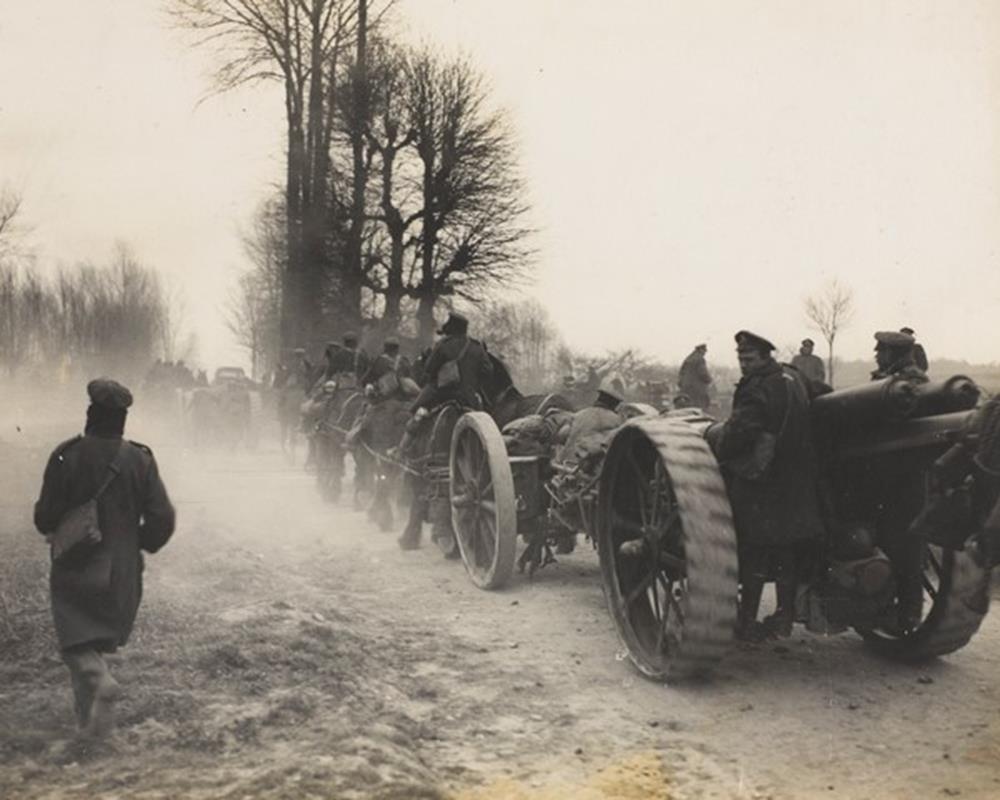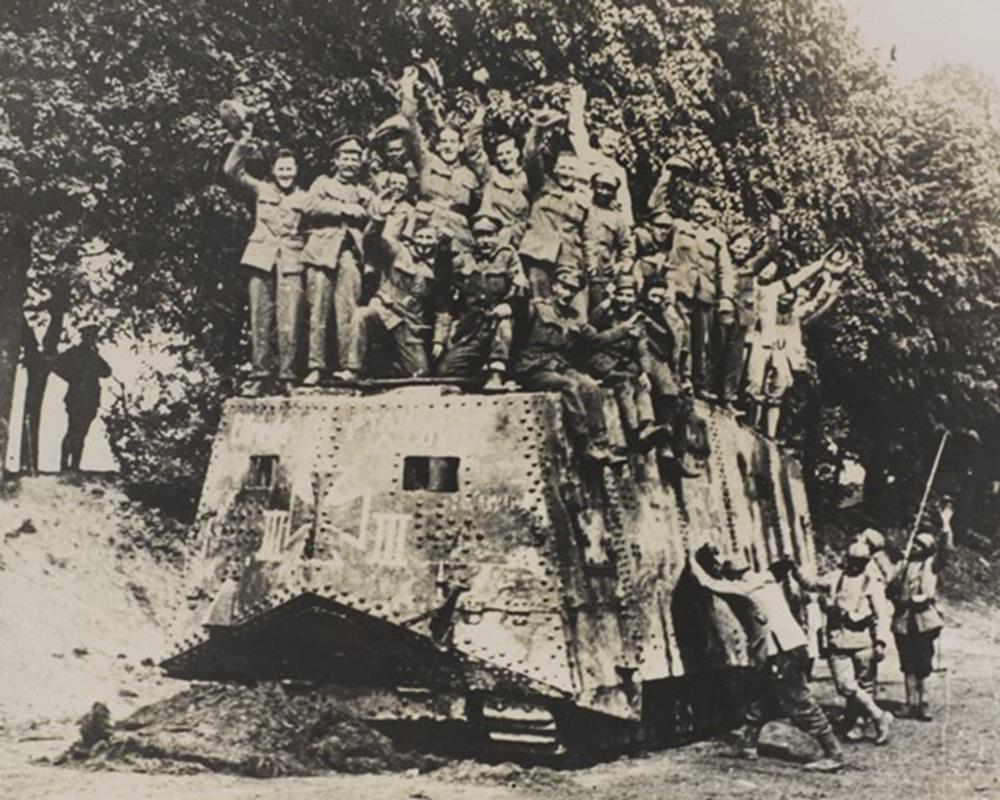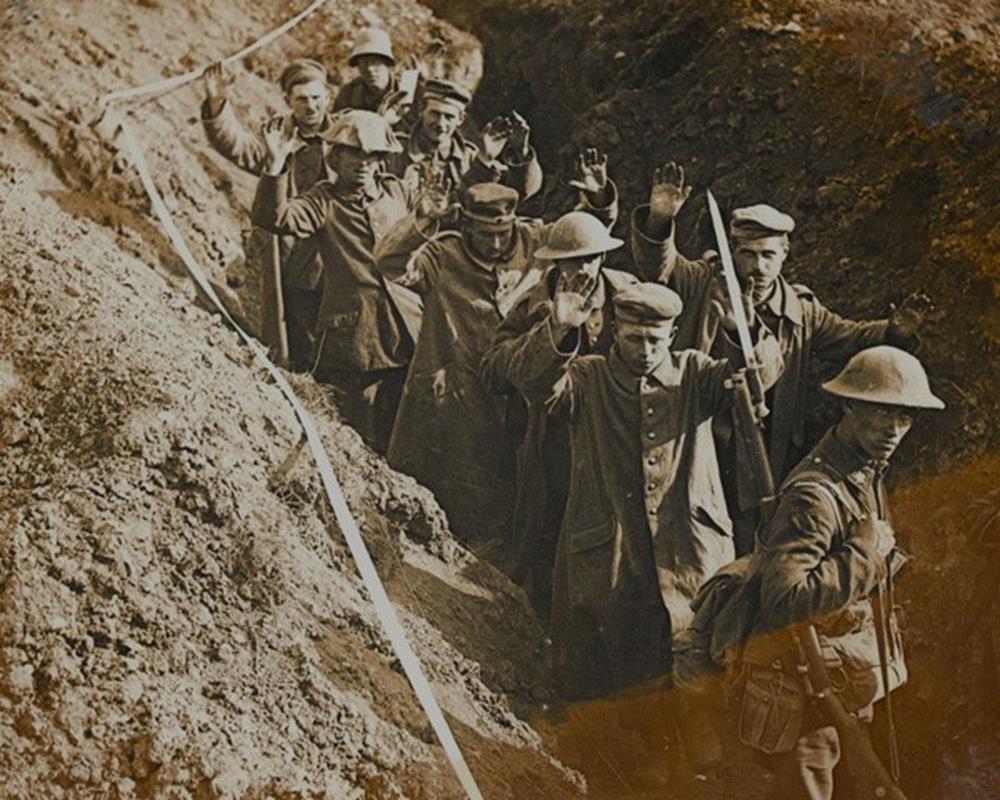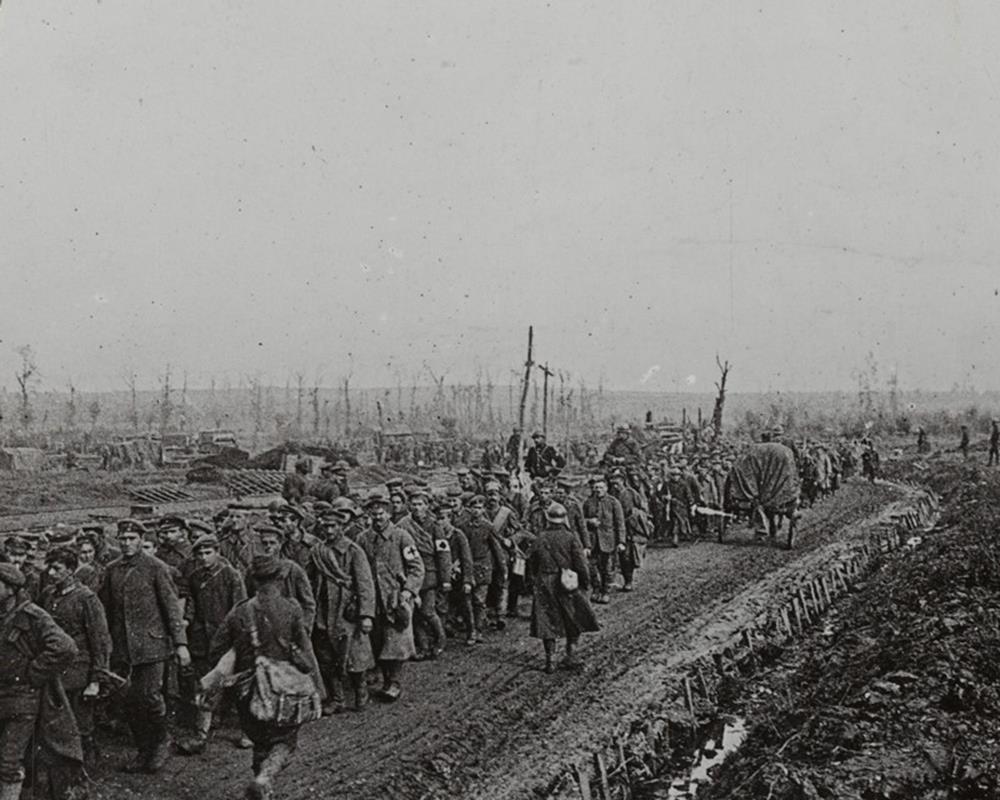23 – 1918 The End of the Land War
The withdrawal of Russia from the war in 1917 released substantial numbers of German troops for use elsewhere.
Aware that submarine warfare had failed to defeat Britain and that large numbers of American troops would soon be committed to the war, on 21 March 1918, after years of stalemate trench warfare, the Germans launched Operation Michael.

British and French troops – Spring 1918
Around 10,000 guns fired over a million shells in five hours. Then, 47 German divisions attacked, and by 5th April had pushed the Allied lines back by 40 miles. It looked like the Germans might win a stunning victory, but the Germans were too exhausted to sustain the offensive and lacked the transport to move men, supplies and guns across the shattered landscape of the Western Front. They were held east of Amiens.

British guns move up to meet the offensive – March 1918

Troops moving up the line – 1918
On 8th August 1918, the allies launched a major attack at Amiens using over 2,000 guns, 450 tanks and 1,900 aeroplanes to support the attack by 13 divisions They had learned how to combine infantry, artillery, tanks and aircraft in a co-ordinated attack.
This time it was the German front that broke. The German Commander-in-Chief, General Ludendorff, called it ‘the black day of the German Army’ and concluded that Germany could no longer win the war.
He asked the Kaiser to begin peace negotiations with the Allies – based on President Wilson’s Fourteen Points.

Allied soldiers on a captured tank – 1918

Prisoners captured – August 1918

Prisoners captured in the final rout – November 1918
| < 22 – Those who fell |
| Δ Index |
| 24 – Mutiny of the German Navy > |
top of page
